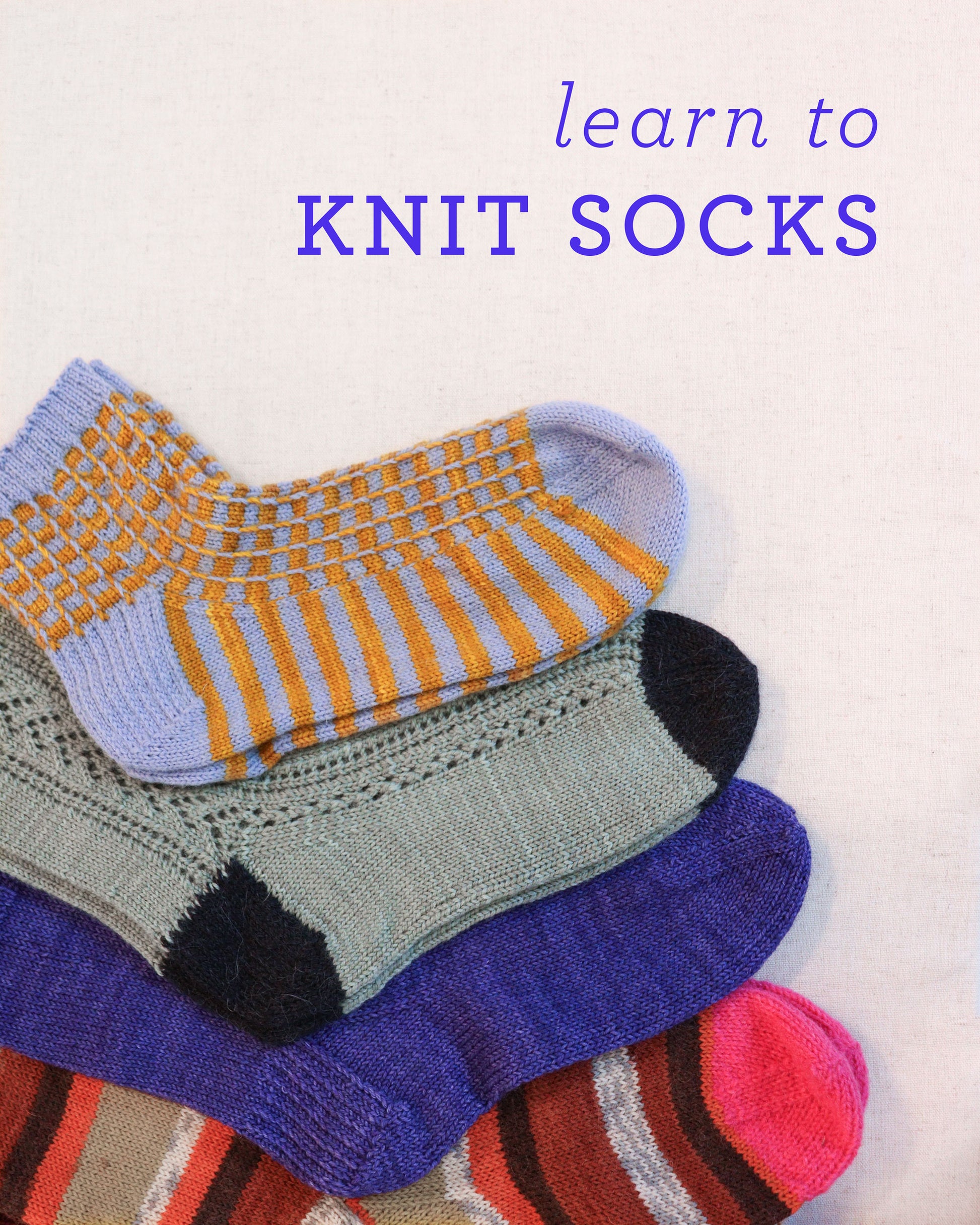Learn to Knit Socks
Learn to Knit Socks
We teach this lesson plan at our recurring Intermediate & Advanced Knitting Class. Sign up for your first session here to get started on this project!
Want to make your first pair of handmade socks, but got cold feet? Not for long! If you're possessed of the desire to knit warm, cozy handmade socks but feel slightly intimidated by all the skills necessary to complete them, join us for five sessions of sock making basics. You'll learn how to jump in to the tiny stitches, knit a cuff, turn a heel, measure your feet for the perfect length, and craft a toe-tally comfortable toe in the company of other first-time sock knitters.
SESSIONS & LESSON PLAN
Session 1: intros, picking a size and type of needle, starting the cuff and leg
Session 2: heels day 1!
Session 3: heels day 2!
Session 4: finishing the sock at the toe
PROJECT
A pair of socks!
PATTERN
Basic Cuff-Down Socks by Beth Sketoe
SKILL LEVEL
Almost Advanced. If you know everything in the required experience section below, you know enough to take this class! You can read about how we determine skill levels here.
REQUIRED EXPERIENCE
To take this class you must already be comfortable with the following techniques: long tail cast on, knit, purl, working in the round, working in a rib, k2tog, p2tog, ssk, weaving in ends, and some experience reading simple patterns.
WHAT YOU WILL LEARN
How to choose a sock size, german twisted cast on (also called old norwegian cast on), knitting in the round on small circumferences using long circulars, short circulars, or double pointed needles, how to knit a flap-and-gusset heel, and grafting stitches together at the toe.
REQUIRED YARN - available for purchase at the shop
300–450 yards of fingering weight wool & nylon blend sock yarn. We recommend using Manos del Uruguay Alegria for washability, strength, and durability! We also have a few other options in the shop you can choose from.
REQUIRED TOOLS - available for purchase at the shop
US 1 / 2.25 mm double pointed needles or US 1 / 2.25 mm 32–40" circulars for magic loop and US 1 / 2.25 mm 9" circulars (optional)
The pros and cons of the different needle options will be discussed in the first class and can be purchased then, so there is no need to buy them ahead of time if you're not sure which type you'd like to use.


